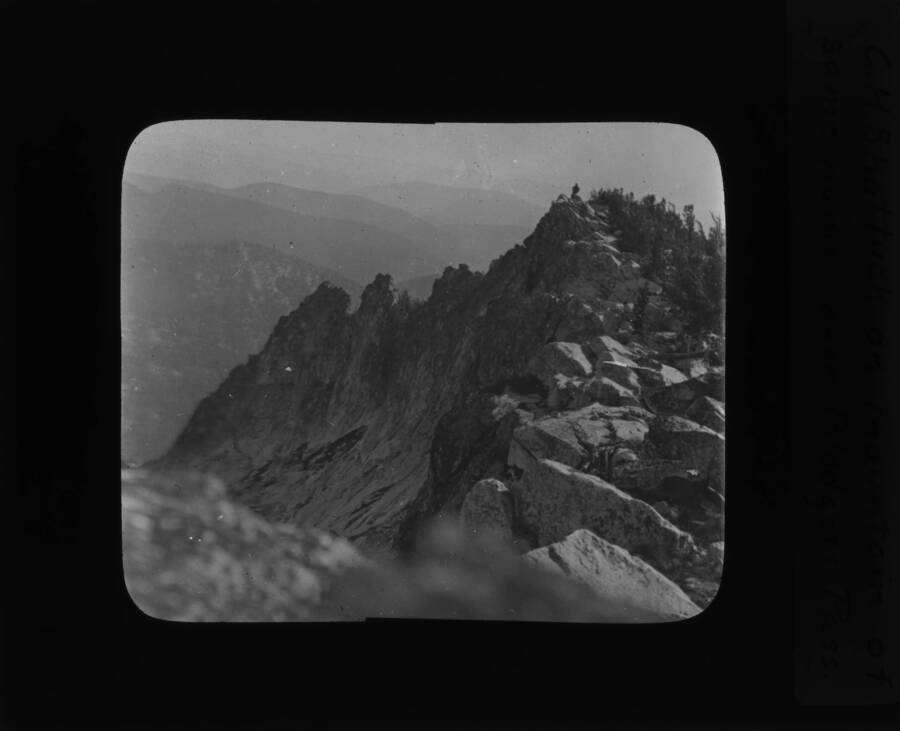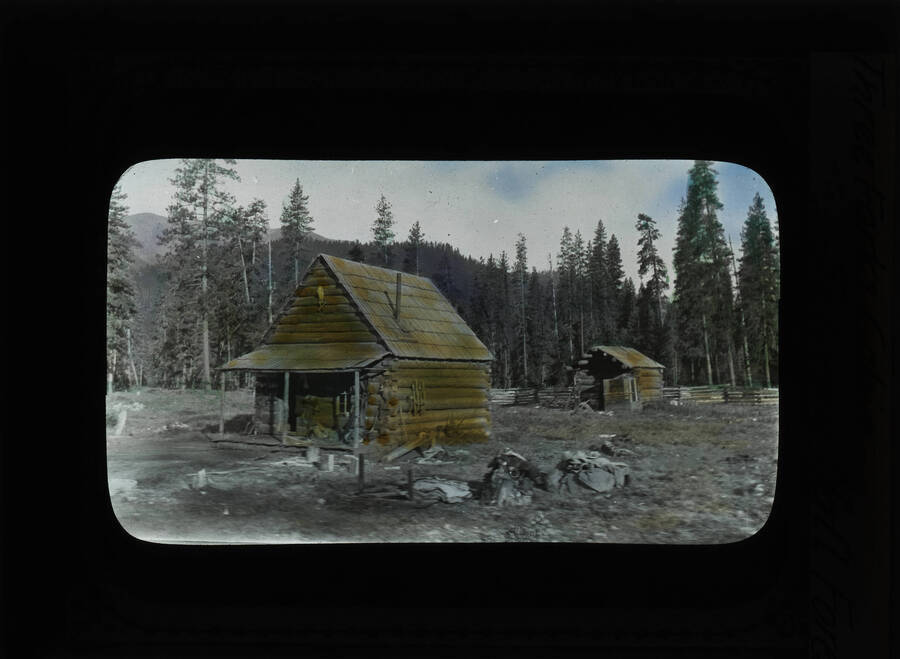C.H. Shattuck Lantern Slides, 1904-1910
Early twentieth century slides related to the University of Idaho and forestry
Contents: About Charles Houston Shattuck | About the Collection | Tech
About Charles Houston Shattuck
Charles Houston Shattuck arrived at the University of Idaho in 1909 as the head of the newly created Department of Forestry, the second such program established in the Western United States. Shattuck had earned a Ph.D. with high honors in botany the year before at the University of Chicago, and had teaching experience in forestry, botany, natural history, and many other subjects and so was able to bring with him his own collection of illustrative material, such as lantern slides similar to the slides in this collection.
The Department of Forestry was first housed in the College of Agriculture, then quickly moved to the College of Letters and Science when Shattuck was appointed Dean there. He made the most of his fledgling department and could be seen leading his classes on long hikes across Palouse woodlands in all sorts of weather. Shattuck spent his summers conducting research in nearby national forests and other local woodlands, practicing surveying, forest clearing, methods of wood extractive chemistry, and propagating trees and shrubs for sale in Idaho.
The University of Idaho campus was a barren patch of hilly land when Shattuck started. He quickly became familiar with the local flora and devised a plan to test trees for use as windbreaks, shade trees, and other purposes. Starting on what was originally an unpopular weedy slope, Shattuck, along with C.L. Price, the first person hired to oversee campus plantings, turned the 12 acres just southwest of the Administration building into an experimental nursery that in time held over 12,000 trees representing 150 species.
Shattuck left the U of I in 1917 due to differences in administration but stayed active in forestry. The original nursery became an arboretum, a cherished campus landmark, that was posthumously named the Charles Houston Shattuck Arboretum in 1933, two years after his death.
An early type of photography, lantern slides and the devices used to project the images were originally called “Magic Lanterns” due to the wonder by the audience of being able to see an image cast onto a screen. Besides for entertainment, the ability to project images from lantern slides to a large audience became a popular teaching tool for schools, universities, and museums. The photography process created slides in black and white, any color had to be applied by hand by painting each slide with specially formulated paints and dyes.
About the Collection
This collection of early twentieth century slides depict the University of Idaho, as well as the wilderness of Idaho and Idaho residents’ attempts at domesticating it. The slides came to Special Collections by way of the Latah County Historical Society in 2009. In the late 1970s, they were found next to a dumpster on a street in Moscow, ID by noted historian Keith Petersen. Petersen recognized the potential value of such local history, and when he couldn’t find the original owner, kept them at the Historical Society. Some of the images in these slides appear in a report from C. H. Shattuck, University of Idaho, Dept. of Forestry to Major F. A. Fenn, Supervisor, Clearwater National Forest Day-NW SD428.C55S5 and in an article by C. H. Shattuck in the UI Agricultural Experiment Station Bulletin no. 91, Dec. 1916 (See also Idaho S53.E416).
For a detailed description and inventory of the contents of this collection, please see our finding aid: PG 105 in Special Collections and Archives.
Technical Credits - CollectionBuilder
This digital collection is built with CollectionBuilder, an open source framework for creating digital collection and exhibit websites that is developed by faculty librarians at the University of Idaho Library following the Lib-Static methodology.
Using the CollectionBuilder-CSV template and the static website generator Jekyll, this project creates an engaging interface to explore driven by metadata.


